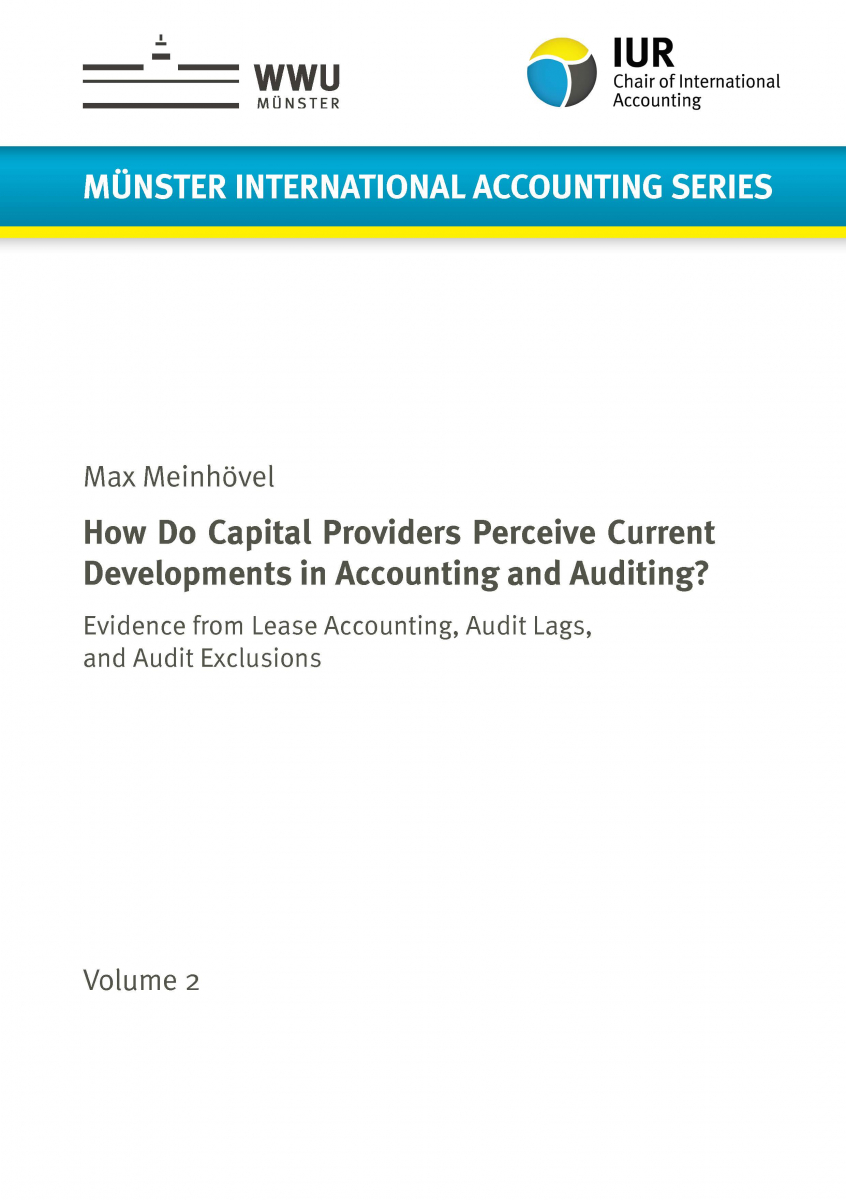Volume 2 – Max Meinhövel
How Do Capital Providers Perceive Current Developments in Accounting and Auditing?
Evidence from Lease Accounting, Audit Lags, and Audit Exclusions

Under IFRS and U.S. GAAP, the primary purpose of financial reporting is to provide decision-useful information to capital providers. The reporting environment in which this information is provided is constantly changing. On the one hand, this constant change makes it difficult for capital providers to correctly interpret the information provided by management and auditors. On the other hand, it requires management and auditors constantly to adjust the content and style of their reports. The thesis addresses this communicative situation and examines the way capital providers perceive accounting and auditing information in the context of three selected current developments: the trend toward harmonization of accounting rules, the tendency to publish corporate disclosures as soon as possible, and the increasing importance of non-financial reporting.
The first study deals with the increasing harmonization of accounting regulation using the example of the lease accounting standards IFRS 16 and ASC 842, which have become mandatory in early 2019. These standards were jointly developed by the FASB and IASB to advance international accounting standard convergence. The study examines how the investors of affected companies react to the new standards. It finds that the market reacts more positively when operating lessees have higher information asymmetries and national institutions favor strong enforcement of the rules. This is in line with the boards’ objective of improving financial reporting quality.
The second study focuses on the trend towards providing decision-useful information to capital providers as soon as possible. This "fast close" trend pressures the preparers of financial statements to increase publication speed. The study argues that a delay in the audit in this environment could be a signal of problems that emerged during the audit and that may have negative consequences for the company in the future. Results show that an excessive audit duration is indeed associated with weaker internal controls, poorer information quality, and negative stock returns in subsequent years.
The third study deals with the increasing provision of non-financial information in the management report. To avoid the additional requirements resulting from this trend, auditors have developed the idea to exclude voluntary disclosures from the audit of the management report at their discretion. The study examines how auditors can effectively communicate that some of the information in the annual report has not been audited. It concludes that a clear label identifying which pieces of information are audited and which are not, helps investors to distinguish audited from unaudited information. The study further shows that referencing the unaudited matters in an appendix to the auditor's report, which is currently preferred by the Institute of Public Auditors in Germany, has no comparable effect.
Taken together, the thesis informs preparers of financial statements, capital providers, and standard setters about the influence of the three selected current developments on investors’ reaction to the information provided by firms and their auditors. The results have important implications for the work of standard setters as well as for managers’ disclosure decisions, the reporting style of auditors, and the interpretation of information by capital providers.


